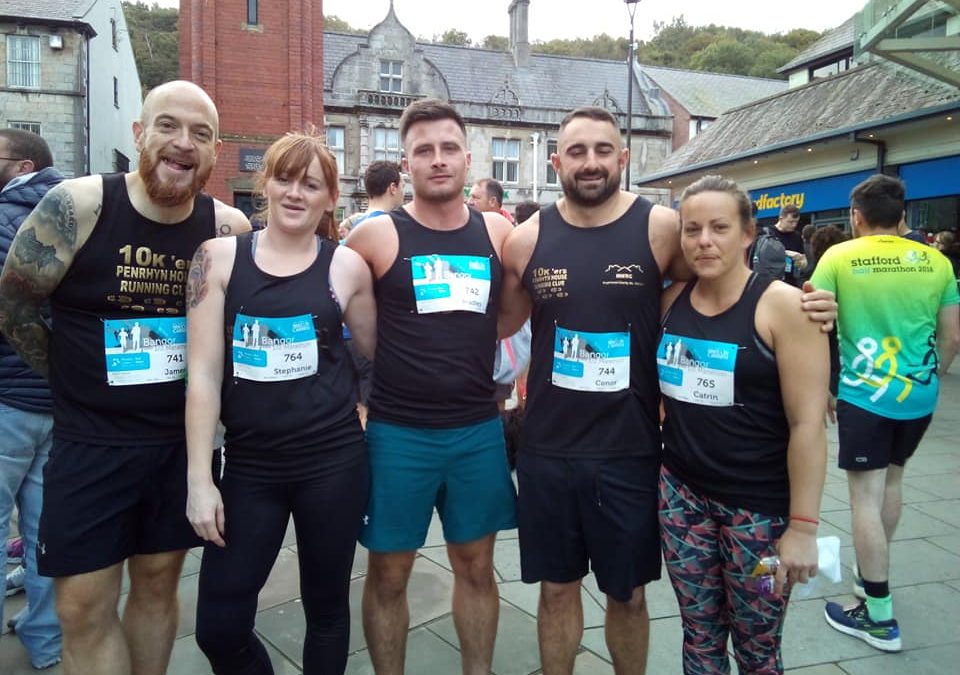In my interview with James Deakin in June 2023, he described a number of key principles that are the foundation of the approach of North Wales Recovery Communities (NWRC) in facilitating the process of recovery in community members. One of the key features of NWRC is that it is ‘permeable’ to the outside world, both in terms of members of the local community coming into Penrhyn House, to deliver mutual aid groups for example, and NWRC members doing acts of service in the local community and further afield.
James and his colleagues try to ensure that NWRC is a broad a church as possible. They want to create many pathways to recovery, and ‘cover all the bases’ in relation to mutual aid groups available in Penryhn House. If the person can’t relate to the 12-Step approach, they can join Smart Recovery groups, or CBT (Cognitive Behavioural Therapy) or ACT (Acceptance and Commitment Theory) groups. However, they must do all the options (groups) for their first 12 weeks with NWRC, so that they can make an informed choice of what works best for them after that initial period.
Interestingly, some people continue to go to more than one type of mutual aid group (e.g. 12-Step and SMART Recovery groups) after the initial 12-week group, despite the very different principles underlying these two types of approach. In fact, research at NWRC suggests that it was not the actual mutual aid group (e.g. AA or SMART Recovery) that is most important in helping people, but the fact that members are attending some form of group with people who are clean and sober.
NWRC members have to engage in 20-30 hours of organised social activities a week, which helps them form strong positive, ’sober’ connections. James emphasises that addiction is disconnection, and recovery is connection. Right from the beginning, people are encouraged to get assimilated into a group as quickly as they can. ‘The sooner you feel part of the group, the safer you become.’
James points out that they use the analogy of the herd of animals. ‘When you watch these nature documentaries and you see the lions hunting the antelope or whatever they are, it’s never the young and the fit ones in the middle that they’re looking at. They are looking at the weak ones who are straggling behind or are on their own. and looking to get picked off…. If you want to stay safe and if you want to get well then make yourself part of a herd. Be part of something, connect with something, be in the middle of it.’
When a newcomer is brought into North Wales Recovery Communities (NWRC), there is more of an emphasis on the group to get the person assimilated, than there is on the person to get assimilated into the group. The group knows that the early abstinence phase is the riskiest time for a newcomer. It is important for the person that they immediately start engaging in the mutual aid groups and other activities—they mustn’t be sitting alone lost in their thoughts, with the possibility of deciding that drinking or drugging again is the best option.
Involvement in health and fitness activities, such as hillwalking, five-a-side football, and weekly 5km Park Runs, is also strongly encouraged. Most people are unfit when they arrive at Penrhyn House. They are told that ‘emotional resilience begins with physical fitness.’ They are encouraged to eat healthily and told to avoid energy drinks. James emphasises that ‘recovery is holistic’—attending mutual aid meetings, having a social group around you, getting exercise, having a good night’s sleep and a healthy diet, is going to have a positive impact.
James emphasises that addiction takes up everything in a person’s life, so when you remove that, ‘there’s this massive void that is left behind…. You have to fill that.’ The person can’t sit around and watch TV all day. They need to find something that they can get passionate about. James believes that hobbies are really crucial to a person’s recovery. ‘The things that we do by choice, the things that we just do for sheer enjoyment, either because they give us just a sense of pleasure or a sense of mastery…’ The community’s Growing for Change project is also relevant here; it’s also about people being outside and nurturing something.
When James was getting well, he was very conscious of the fact that he had caused harm and damage to those around him during his addiction days. As he started to help others, he realised that there was so much value to giving back, and to be recognised as being a positive, upstanding member of the community. A person providing service, or giving back, to the wider community is considered by NWRC to be essential to helping a person find long-term recovery. This giving back can take a variety of forms.
An example of NWRC as a whole giving back to the local community was the feeding of vulnerable people in the community, using food from the community allotment and that provided by supermarkets. The food was gathered, cooked, frozen and delivered by community members. A total of 80,000 meals were provided to families and individuals. NWRC currently runs a surplus food club at their cafe, Bwyd Da Bangor (Good Food Bangor).
A second example of giving back occurred when NWRC obtained about ten sewing machines and community members started making reusable sanitary towels out of material which were sent to Kenya. They made about 20,000 towels. One of the big issues for the girls in Kenya was ‘period poverty’. Once girls start menstruating, they couldn’t access school anymore, as disposable sanitary towels didn’t really exist.
One of the lads said to James, ‘For the first time in my life I actually feel like I’m contributing to someone else who is worse off than me.’


